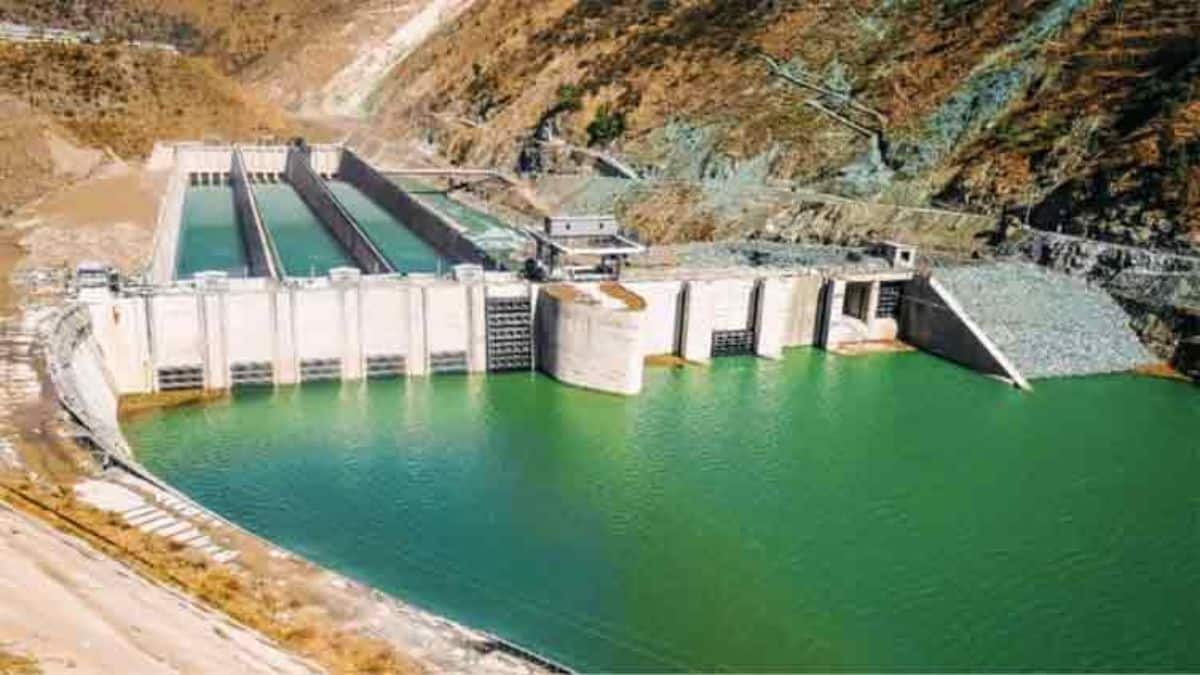 Image Credits - Dunya News
Image Credits - Dunya News
The Water and Power Development Authority (Wapda) announced on Thursday that the 969-megawatt Neelum-Jhelum Hydropower Project, valued at over Rs500 billion, has been completely shut down for inspection due to a major operational issue detected a month ago. The decision comes after significant pressure fluctuations were observed in the project’s headrace tunnel.
According to Wapda’s statement, a comprehensive plan will be chalked out in coordination with project consultants and international experts to undertake remedial works to rectify the issue once the problem is traced.
The Incident
A sudden change in the headrace tunnel pressure was first observed on April 2. Following the consultants’ advice for the tunnel’s safety, the project management started operating the plant at a restricted generation of 530MW on April 6 to monitor the fluctuation in the headrace tunnel pressure.
The plant, located in Pakistan-occupied Kashmir (PoK), continued to operate smoothly at this reduced capacity until April 29, when further instability in the tunnel pressure necessitated a gradual reduction in power generation. At around 11 pm on April 29, a further change in the headrace tunnel pressure was observed, prompting a gradual reduction in generation, but the pressure could not sustain within safe limits as per the consultants’ advice.
Keeping in view the safety of the headrace tunnel and the powerhouse, the plant was thus shut down at 6 am on May 1 for a physical inspection of the tunnel to identify the problem leading to reduced pressure.
Dewatering Process
Based on discussions with consultants regarding dewatering the 48 km-long tunnel, the intake gates at the dam site were lowered for the flushing of de-sanders. Dewatering started from the powerhouse side on the same day and will be executed at intervals to ensure the tunnel’s safety.
Previous Issues and Repairs
The project was earlier closed completely in July 2022 due to major cracks in its 3.5km tailrace tunnel, which were repaired over the next 13 months. Power generation started again in August-September 2023, attaining its maximum capacity of 969MW on March 28, according to Wapda.
Within a week, on April 2, the headrace tunnel’s pressure dropped, and power production fell to about 400MW “soon after the project was restored to full capacity by international contractors because of debris or cracks in the headrace tunnel,” as reported by Dawn.
Impact on Pakistan’s Power Supply
The shutdown of the Neelum-Jhelum Hydropower Project, one of Pakistan’s largest and most expensive hydroelectric projects, is expected to exacerbate the country’s ongoing power crisis. With a generation capacity of 969MW, the plant’s shutdown will result in a significant reduction in the overall power supply, potentially leading to prolonged power outages and electricity shortages across the nation.
Pakistan’s energy sector has been grappling with various challenges, including ageing infrastructure, limited investment in new power projects, and an overreliance on expensive imported fuels. The loss of a major hydropower plant like Neelum-Jhelum will further strain the country’s already strained power grid, affecting industries, businesses, and households alike.
The government will likely have to explore alternative power generation sources, such as thermal plants or increased imports, to bridge the gap left by the Neelum-Jhelum project’s shutdown. However, these alternatives come with their own set of challenges, including higher costs and environmental concerns.
The situation underscores the need for Pakistan to prioritize the development of sustainable and reliable energy sources, including renewable energy and the modernization of its power infrastructure. Until the Neelum-Jhelum project is back online, the country may face significant economic and social consequences due to the reduced power supply.
